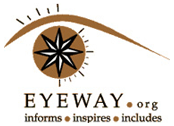Mention the words ‘practice session’ and it conjures up image of players in coloured clothes, photo-op for fans or the air of pre-match excitement. And if you were at the cricket stadium near Aluva, which currently hosts the practice sessions of a national team, your applause would resound a lot louder when the players stepped on to the ground.
For, this is a different class of the Indian cricket team, preparing for the upcoming Asia Cup in Kochi at the sprawling ground at the School for the Blind campus at Keezhmadu, near Aluva.
With neatly trimmed lush green grass and a deep brown pitch at the centre, the stadium forms part of a sports complex — a first-of-its-kind facility for the blind, in Kerala.
Chief Minister Ooommen Chandy is scheduled to inaugurate the facility at a brief function to be held here on January 16.
The complex also marks the diversification of the school — a pioneering institution in the rehabilitation of the visually impaired — into sports promotion and management. As part of its foray into sports, the school organised a south India-level chess tournament in November last year, in which about 100 players from various States took part.
According to the school management, the facility currently comprises a 50,000-sq. ft cricket stadium and a sports hostel with a capacity to accommodate 80 persons.
“The objective is to draw talented blind sportsmen from all across the country and give them training in their respective fields. We will hold sport events and training sessions for them round the year,” said T.S. John, secretary of the Kerala Blind School Society, which runs the institution.
On completion, the complex will embrace separate facilities for various other sports events such as volleyball, basketball and other indoor games. Set up with assistance from various agencies, the stadium cost around Rs.35 lakh while the state-of-the art sports hostel was established by renovating an old building at the location.
Set up with eight students and one teacher in 1962, the school currently accommodates 80 students and 25 teaching and non-teaching staff. About 30 per cent of its students comprise those suffering from multiple disabilities of vision.

Facebook comments